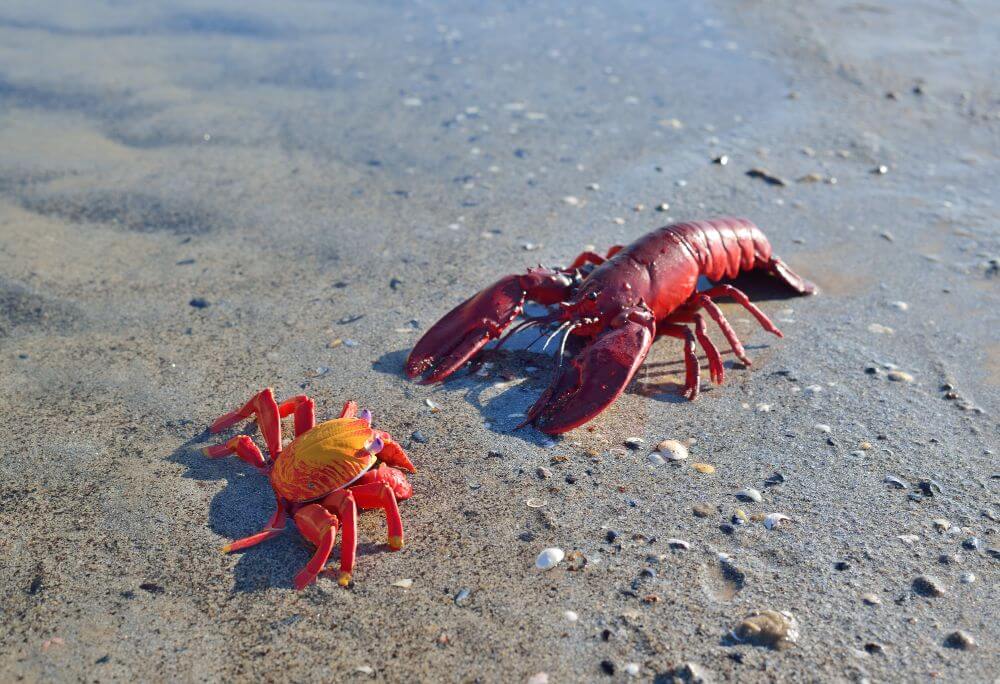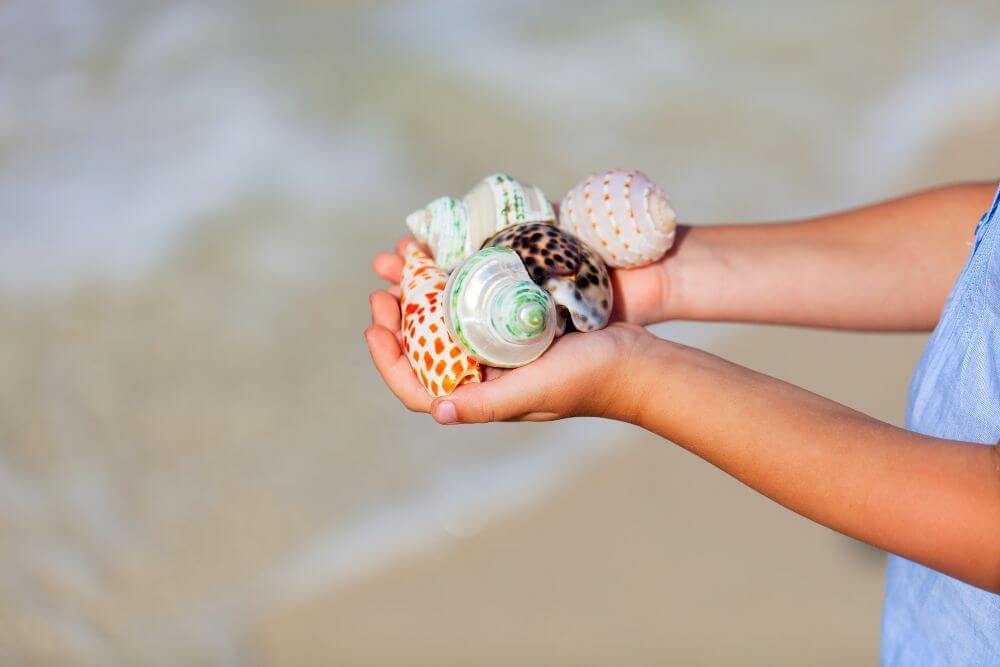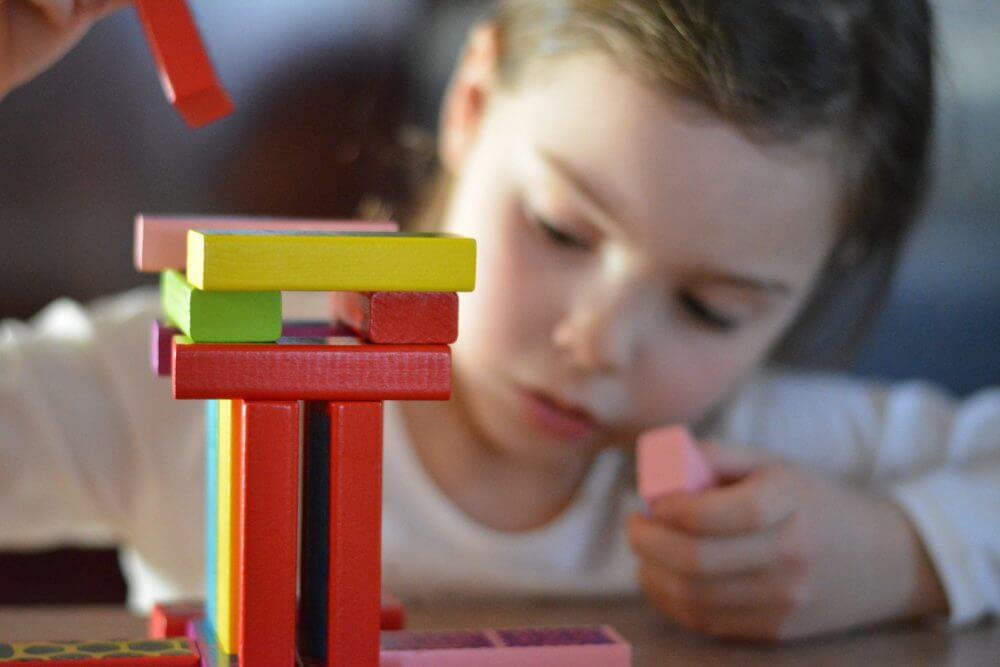Nearly three-fourths of our planet is water, and 97% of this water resides in our oceans. Aquatic life accounts for nearly 25% of all living species. The oceans are an enormous source of life, and by all accounts, they are the place where life first originated on earth.
Contents
Unfortunately, our progress in the last century has come at a considerable cost for our oceans - pollution impacts nearly 40% of our oceans. Oceans absorb up to 30% of carbon dioxide, protecting us from the adverse effects of global warming. And almost 5% of our global GDP and three billion people's livelihoods depend on the oceans (source).
These facts are why marine biology is an exciting possible future career path for your child. If you want to kindle your child’s love of the oceans, you should introduce this exciting scientific field through marine biology STEM toys.
In preparing for this article, I combed through nearly 50 toys and books to create a shortlist of 9 toys - grouped according to age. In this article, you will find:
- Reviews of the 9 best marine biology STEM toys for kids.
- What you should look for in a marine biology toy.
- Answers to important questions.
- A handy buyer’s guide.
Marine Biology Toys for 3-Year-Olds
OUR TOP PICK FOR 3-YEAR-OLDS
This toy is a large 2 ft x 3 ft jigsaw puzzle that contains a picture of aquatic life on the ocean floor.
Specifications:
- 48 pieces.
- 2 ft x 3 ft size when assembled.
Details:
Marine Life: This toy is a fun way to introduce marine life to preschoolers. Children will recognize and name sea creatures such as sharks, stingrays, dolphins, orcas and colorful fish.
Extra-large Pieces: The pieces are easy for children to grasp.
Colorful: The jigsaw pieces are colorful and attractive for kids. They inspire individual and group learning and creativity while also teaching kids about sea animals. They also improve fine motor skills.
Easy to Wash: The pieces are easy to wash, as they have a plastic coating on them.
Pros:
- Large pieces, easy for children to hold.
- Easy to wash.
- Lots of learning, fun colors.
Cons:
- The picture on the box is a bit fuzzy and hidden on the edges, making it difficult for a toddler to complete the puzzle.
Bottom Line:
Melissa & Doug's jigsaw puzzle is a fun and colorful way to introduce the world of marine biology to toddlers.
EDITORS CHOICE FOR 3-YEAR-OLDS
Ocean Sea Animals is another great way to introduce sea animals to toddlers. The kit includes more than 50 detailed sea animal figurines. Your child can learn the names of each and get acquainted with them.
Specifications:
- 68 sea animals, 8 types of seaweed, 2 types of coral.
- Figurines are 4 inches in size.
Details:
Marine Life: You can introduce your child to more than 50 varieties of marine life. Your child will learn about such exotic creatures as octopus, shark, whale, lobster, crab, coral, seaweed and starfish.
Large Pieces: Each figurine is about 4 inches large. They are all well detailed and hand-painted.
Non-toxic: All the small toys are made with non-toxic plastic and hand-painted with eco-friendly water paints.
Pros:
- A wide variety of sea creatures is covered.
- Non-toxic plastic.
Cons:
The figurines are a bit small, so there is always the danger of a child putting it in their mouth.
Bottom Line:
Ocean Sea Animals is a great toy for introducing your 3-year-old to a whole host of marine animals. It's also a great option for party favors or ocean-themed parties.
Marine Biology Toys For 5-Year-Olds
BEST PICK FOR 5-YEAR-OLDS
There can be no better way to teach your kid about marine life than to see them grow in a tank! Little Live Aqua Dragons let you and your kids' hatch and grow your sea monkeys.
Specifications:
- Tank Size: 6 x 1.4 x 6.7 inches.
- LED lights and magnifying glass included.
Details:
Marine Life: With this toy, you and your child can hatch your sea monkeys and raise them as pets. Just put the eggs into the aquatic tank, wait for 48 hours, and you can see the eggs hatch with your magnifying glass. After about two weeks, they grow large enough to be moved into an actual tank.
Learning: Raising their sea pets helps children understand how sea animals live, breathe and eat. The toy comes with food for the little dragons, and your child will have to feed them every 2 - 3 days. It teaches them a valuable lesson about responsibility as well.
After a while, you will have to move the sea dragons into a separate tank, so please make sure that your child understands the commitment that this toy requires.
Complete Kit: In the early days, you might be excited to see the little monkeys, but you won't be able to see them with your naked eye. The provided tank comes with LED lights and a magnifying glass to help you see them easily. Apart from this, the box has all the equipment needed to feed the dragons as well.
Pros:
- Grow your sea monkeys! It's a fascinating toy for little children.
- The sea monkeys look amazing in the LED light at night and under the magnifying glass.
Cons:
- The eggs take about 2 - 3 days to hatch.
- The child has to remember to feed them regularly.
Bottom Line:
There is no better way to learn about marine life than to have underwater pets. These little dragons are the perfect first pet, and even young children can care for them. They do not require much intervention and are lovely to watch as they start to grow and reproduce.
EDITORS CHOICE FOR 5-YEAR-OLDS
More than a toy, this is a complete science kit with loads of knowledge, fun experiments, real-life seashells and even an accompanying Netflix show and books.
Specifications:
- Includes posters, a sand dollar, stickers, replica starfish and seashells.
- Accompanying book series by Bruce Degen & Joanna Cole.
- Netflix series - Magic School Bus.
Details:
Experiments: This toy kit includes everything that a budding marine biologist should know. There are experiments involving constructing a desalination plant, building a volcano, making shells bubble and studying how salts dissolve in ocean water!
Games: Your child will also get to learn about sea life in different ocean zones through games involving stickers, marine animal matching, creating collector’s cards, collecting seashells and much more.
Developed By: The game is developed by Harvard grads, parents, and teacher groups and tested extensively by children.
Pros:
- A wide variety of activities keeps your child engaged.
- Experiments are easy and fun to conduct.
- The Netflix show and books are a wonderful accompaniment.
Cons:
- The paint used for the volcano experiment is quite thin. You will have to apply many coats.
Bottom Line:
Exploring Oceans is a complete science kit for a budding young marine biologist. It has many hands-on experiments and lots of potential for learning. The activities are imaginatively created and fun for children.
RUNNER UP FOR 5-YEAR-OLDS
If your child loves oceanography and arts and crafts, this is the perfect toy to combine both of these hobbies. Your child will get to bring two sea turtles and a starfish to life using glow-in-the-dark clay.
Specifications:
- Turtle habitat measurements: 10" L x 8" W x 1 ¾" H.
- Includes 2 turtles and 1 starfish.
- Glow in the dark clay, rocks and plants are provided with the toy.
Details:
Arts and Crafts: If your child loves glow-in-the-dark experiments and working with their hands, then they will simply adore this art and crafts-based science toy. The kit includes model toys which your child can use to make their colorful turtles and starfish.
Ocean Life: Creating a pretend habitat for these ocean creatures piques children’s interest in exploring the world of marine biology and aquatic life.
Sensory Play: Playing with the colorful glow-in-the-dark clay provides a sensory-based learning experience for your child, who develops their fine motor skills and hones their creativity and imagination through this toy.
Pros:
- High-quality clay. It does not dry out.
- The clay is easy to wash away.
Cons:
- It sticks inside the crevices of the animals.
Bottom Line:
Glow-in-the-dark Turtle Lagoon is rare arts and crafts-based science project that challenges children's creativity and motor skills. The visual appeal of colorful glow-in-the-dark clay, mixed with the scientific curiosity about marine animals, is a brilliant mix for children.
Marine Biology Toys for 8-Year-Olds
BEST PICK FOR 8-YEAR-OLDS
The sea-based digging combination of the National Geographic dig kit involves 12 sets of seashells from which children can excavate sea animals (two of each). It's an excellent toy for ocean-themed parties and budding marine biologists. It includes a book describing each of the animals in detail.
Specifications:
- 12 seashells.
- 6 sea different sea animals: turtle, octopus, hammerhead shark, whale, crab, and manta ray - the kit comes with 2 of each.
- 12 digging tools and brushes for excavation.
Details:
Excavation: The kit helps your child learn about both excavation and marine biology. Your child will learn about the sea animals and understand how excavation works - perfect for all the little archaeologists out there!
Great for Parties: It's a fun game to play with others, especially at a party. Just give one to each child and watch them spend hours excavating and discussing each other's animals.
Pros:
- Great party game. Kids have a lot of fun excavating the animals together.
- The accompanying book is informative.
Cons:
- The shells are a bit hard. You have to moisten them somewhat before the kids can start excavating them.
Bottom Line:
It is an exceptionally well-made toy, and there is a lot of learning provided in the accompanying book for the children to absorb.
EDITORS CHOICE FOR 8-YEAR-OLDS
This toy is a more intricate toy for children who are interested in sharks. It demonstrates the inner anatomy of the great white shark, all its organs, and how they connect. You can take out the parts and easily put them back in place.
Specifications:
- 13" long great white shark.
- 20 organs and bones.
- Assembly guide and fun facts about the great white shark included.
- Display platform included.
Details:
Marine Life Anatomy: This toy is a perfect way to teach your child about marine life anatomy. You can explain the various organs and body parts, their similarities and differences from humans, and how the different parts connect.
Learning: The included assembly guide shows how to assemble the model shark and has fun facts about the creature, contributing to your child’s learning.
Quality: The sculpting and painting of the body parts are exquisite.
Pros:
- Stunningly beautiful model.
- The accompanying material is very informative.
- Lots of learning about the anatomy of the great white shark.
Cons:
- The instructions on putting the organs in are a bit difficult to understand.
Bottom Line:
This toy is a more intricate toy meant for teaching your child about the anatomy of sharks.
RUNNER UP FOR 8-YEAR-OLDS
ELifeBox Marine Life Specimen Set is another great toy to teach children about smaller sea animals and insects using real-life specimens encased in an acrylic resin solution.
Specifications:
- 6 sea animals included: fiddler crab, hermit crab, starfish, sea cucumber, nassariidae (mud snails) and chiromantes dehaani (mudflat crab).
- Includes magnifying glass for closer inspection and factbook on each of the animals.
- Each specimen is 1.57 x 1.57 inches.
Details:
Up Close to Real Sea Animals: This is a neat way for your child to look at these exotic sea creatures close and understand their small and intricate body structures.
Well-crafted: The encasings are well crafted. You can see each animal very closely. For even finer examination, the kit also has a magnifying glass.
Learning: A factbook that contains information on each of the creatures provides more detail to the children.
Pros:
- You can see very minute details on the animals.
- The included magnifying lens provides even better detail.
Cons:
- The encasings are a bit small. I would recommend an adult to be around at all times, so your child does not put them in their mouth.
Bottom Line:
It's a great toy that helps children understand the anatomy of smaller sea creatures.
RUNNER UP FOR 8-YEAR-OLDS
The orca is a fascinating sea creature. This toy is similar to the great white shark 4D toy that I explained earlier.
Specifications:
- 16.5-inch replica of an Orca.
- It includes 16 detachable body parts.
- Display platform also included.
Details:
Learn about the Orca: This toy is a wonderful way for children to understand the internal workings of a large aquatic animal like an orca.
Quality: The sculpting and painting of the body parts are very detailed.
Pros:
- Beautifully designed, very detailed and informative about the internal workings of an Orca.
- Brightly-painted organs.
Cons:
- No instruction booklet.
Bottom Line:
If you would love your child to learn more about the orca and the biology of aquatic animals, then this is a great toy.
Buyer's Guide
Age Appropriate
Marine biology is a complex subject. Be sure that the marine biology toy you are purchasing is not too complex for your child to understand. You should start preschoolers with toys that introduce colors, visuals and arts and crafts.
As they get older, you can introduce toys that involve a bit more hands-on exploration. For children in middle school, marine animal replicas that explain their anatomy and biology are a good option.
Materials
As always, look for non-toxic and eco-friendly materials. Ensure that there are no BPA or phthalates in the plastic if the toy uses plastic. The paint should not contain any lead.
Learning
You should look for an appropriate mix of fun and learning capacity. The toy should not make the subject boring for the child. The activities should be fun, imaginative and colorful.
Frequently Asked Questions
What to buy a kid who wants to be a marine biologist?
I have listed some great toys for budding marine biologists.
For 3-year-olds:
- Melissa & Doug Underwater Ocean Floor Puzzle.
- ValeforToy Ocean Sea Animals.
For 5-year-olds:
- Little Live Aqua Dragons.
- Magic School Bus: Exploring Oceans.
- Creativity for Kids Glow-in-the-dark Turtle Lagoon.
For 8-year-olds:
- National Geographic Ocean Animal Dig Kit.
- Fame Master 4D Vision Great White Shark Anatomy.
- ELifeBox Marine Life Specimen Set.
- TEDCO 4D Orca.
Is Marine Biology A STEM career?
Marine biology is the study of marine animals. It is a branch of biology, which falls under the purview of science. Hence, Marine biology is very much a STEM subject. However, a marine biology degree can also move you towards other careers such as oceanography or marine ecology.
What does a marine biologist study for kids?
Marine biologists study life under the great oceans of our world. This study includes everything from huge whales to tiny organisms such as corals and algae.
Wrap Up
Marine biology has the potential to one day save the earth. It is a career every child should aspire to. Our oceans have always given us plenty, but today they need our help to keep them clean and healthy for the huge variety of life that they hold within them.
Toys and games are a fun way to introduce your children to the subject of marine biology. An interest kindled early in childhood can be like a seed that grows into a lifelong passion for your child.
I hope these toys will help pique the interest of your child in this profession.
As a parent of a five-year-old inquisitive boy, I have gained a lot of experience finding fun activities and toys to help him understand science and understanding our world in general. On this blog, you’ll find an extensive amount of tutorials, guides, and toys about Science, Technology, Engineering, and Math based on my personal experience to help your child develop critical STEM skills.



















